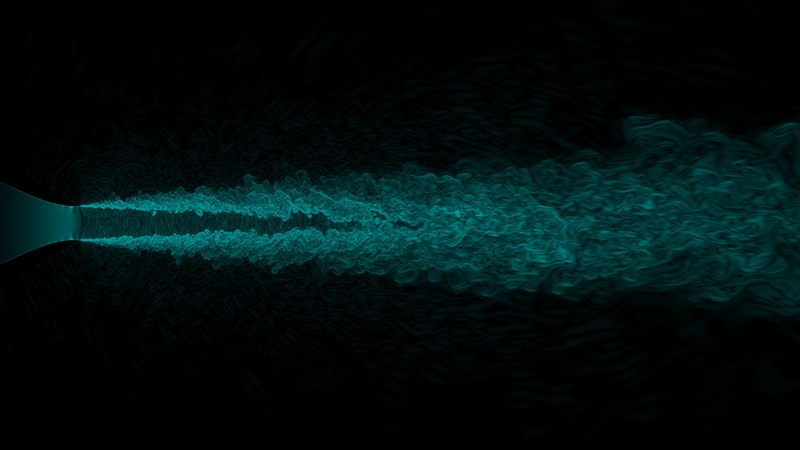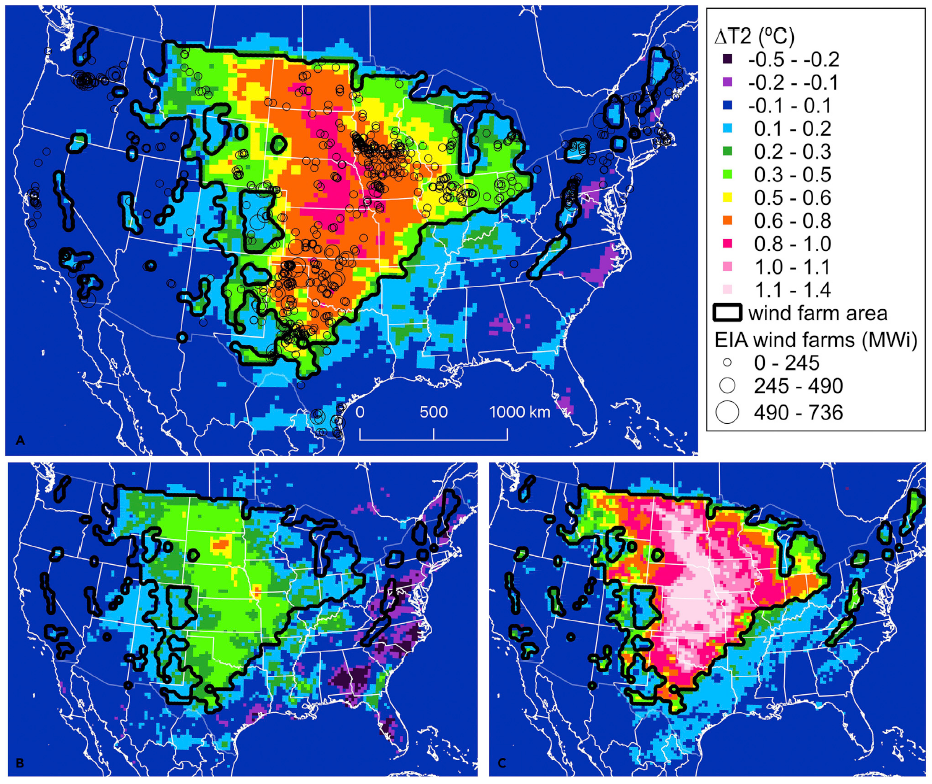
Last week we started to learn how wind turbines impact the environment from a global warming perspective. As an engineer, I have to understand the physics behind that, and in the meantime, I chased one rabbit and found that even though the wind dies down at night, more wind energy is generated at night. It’s amazing. It’s cool. Check it out.
Let us refer back to the paper that started all this, Climatic Impacts of Wind Power[1]. Results of analysis published in the paper indicate the warming effect is “approximately equivalent to the reduced warming [that would be] achieved by decarbonizing global electricity generation.”[2] Wow!
The analysis was performed with a weather forecasting model known as the Weather Research and Forecasting model, or WRF v3.3.1. I don’t know anything about the model, but I do know some things about turbulence, heat transfer, thermodynamics, and computational fluid dynamics – subjects I am sure are built into the model.
As I mentioned last week, I would start with a hypothesis for what I think the drivers of the temperature change would be. I would then see if I’m right, at least directionally, and hopefully within an order of magnitude of the expected outcome (not more than 90% wrong). It seems the authors of the study understand the phenomenon I explained last week, but they do not understand much of the rest.
It Could Be… (per the authors)
It Could Be Boundary Conditions
“Warming was generally stronger nearer to the center of the wind farm region, but perhaps because teleconnections are suppressed by the forced boundary conditions.” That is a courageous statement but opens the door to substantial doubt. If boundary conditions (assumptions) are wrong and overpowering, the whole thing may be garbage.
It Could Be Mixing
“[The analysis] suggests that about half the warming effect is attributed to localized changes in atmospheric mixing, with the other half attributed to mesoscale[3] changes, but this requires further study.” For a full report on localized mixing, see last week’s post, Blown Away by Inversions. First, I think the turbines would minimally disturb the inversion layer described last week. Warm air simply does not sink into a cold dead space without enormous energy input. Unlike the spoof video next door, wind turbines extract energy rather than impart energy.
It Could Be the Low-Level Jet
The unusual warming in the wind-turbine area may be due to interactions between the turbines and the nocturnal low-level jet, they say. I’m not sure the difference between this and the mixing noted above, but they describe the temperature gradient we examined last week. They go on to say the correlation between turbine presence and gradient disruption is weak. Yes – I think I was correct in the prior paragraph. Warm air will not sink into calm, cool air without a major force, not a wind turbine.

It Could be Turbulence
The use of the word turbulence is akin to the use of the word ignorant – there are lots of uses but really only one definition. Turbulence is simply a flow regime that is mixed, random and unpredictable. An image of jet engine exhaust is provided to show the chaos downstream of the engine. Aircraft propellers or jet engines produce huge quantities of turbulence in their exhaust plume as a necessary byproduct and waste to generate enough thrust to take flight and keep it going.
The paper says the sharp wind speed gradient we discussed last week may generate additional turbulence and vertical mixing.
No. Way.
If there is that much turbulence and drag, the goofy guy in the video above would be correct. Turbines would need to be generating wind with electricity rather than generating electricity from wind. Furthermore, the average person doesn’t understand the amazing complexity of modern turbines. The pitch of their blades adjusts continuously – every revolution to minimize waste, drag, turbulence, and uneven loadings on rotor bearings. Wind turbines probably leave very little turbulent wake because it isn’t a necessary byproduct as with propulsion.
Back to the Drawing Board
Let’s remember, the tool used is a weather simulator. Analyzing the impacts of wind turbines is probably beyond the boundaries of the model. In other words, they are extrapolating outside the zone of reasonable confidence for which the models were developed.
Look At This
The following graphic shows the model’s projected change in air temperatures that would result if wind turbines produced all of our electricity.

The big map represents the overall three-year average change in temperature – about 1C in the most affected areas. The lower left shows average impacts during the day and the lower right shows impacts at night.
The paper says there is a slight cooling effect during summer days and even some cooling during summer nights in some places.
Look at the typical jet stream patterns in the next graphic. The jets separate warm air in the south from colder air in the north. The cold air digs deeper into the south, driven by strong northerly winds in winter.
Chew on this: could it be the massive buildout of wind turbines would alter cold flows of air in winter (blocking some cold arctic air) and even a cooling effect during summer nights by blocking prevailing winds out of the south?
Sometimes you have to think bigger rather than smaller – at least check it out.







